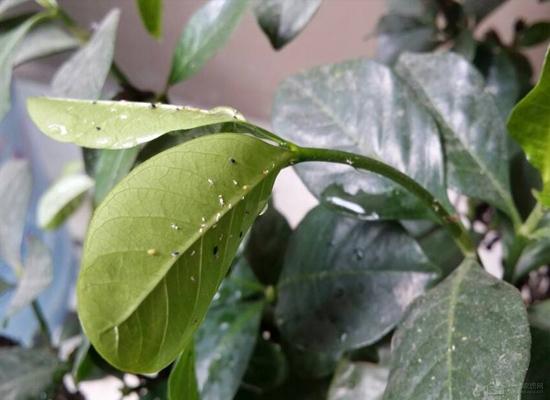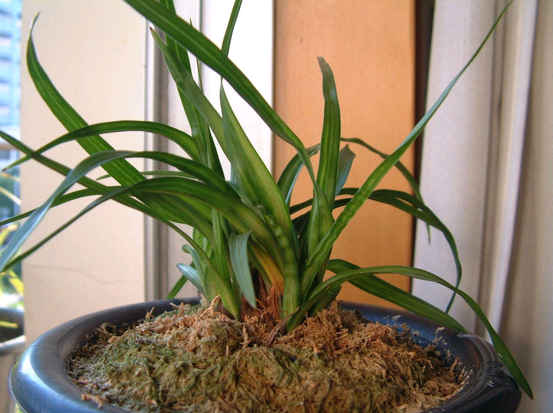What are the main diseases and insect pests of gardenia? How to prevent and cure?
There are not many diseases and insect pests in gardenia, mainly scale insects, bituminous coal disease and rot. The prevention and control methods are as follows:
(1) bituminous coal disease
Scrub with clean water, or spray Baumei 0.3% stone sulfur mixture, or carbendazim 1000-1200 times after scrubbing.
(2) Rot disease
Scrape off the rotten part in time, and then apply 5 °~ 10 °stone sulfur mixture, repeated several times can be cured.
(3) crustaceans
The species of scale insects are different from place to place. In prevention and treatment, the focus should be found early and removed with a small brush. Spray 40% omethoate 1000-1500 times during the nymph incubation period.
What are the common diseases and insect pests of Gardenia jasminoides
Plants will inevitably encounter a variety of diseases and pests in the process of growth, and gardenia is no exception, but the diseases and pests of each plant may be different. This paper briefly introduces the control methods of diseases and insect pests of Gardenia jasminoides, which can be used as a reference for gardenia planting friends.

The main diseases of Gardenia jasminoides are brown spot, anthrax, coal fouling, root rot, yellowing and so on. Indoor, the disease may occur all year round, and when the plant is serious, the leaves fall, fruit drop or die. The common pests are red spiders and scale insects. When the disease occurs, the leaves of the plant will be riddled with holes, which will not only affect the plant growth, but also reduce the ornamental degree of gardenia.
Control of common diseases of Gardenia jasminoides
1. Treatment of chlorosis
Chlorosis is caused by many reasons, so different measures should be taken to prevent and cure chlorosis.
Lack of fertilizer: this yellowing disease starts from the old leaves in the lower part of the plant and gradually spreads to the new leaves. Nitrogen deficiency: simple yellow leaves, new leaves small and brittle.
Potassium deficiency: old leaves change from green to brown. Phosphorus deficiency: old leaves are purplish red or dark red. For the above cases, rotten human feces and urine or cake fertilizer can be forced to apply.
Iron deficiency: this yellowing disease is shown on new leaves. At first, the leaves are yellowish or white, the veins are still green, and in severe cases, the veins are yellow or white, and eventually the leaves will dry up and die. To this kind of situation, can spray 0.2% Mel 0.5% ferrous sulfate solution to prevent and cure.
Magnesium deficiency: this yellowing disease gradually develops from the old leaves to the new leaves, the veins are still green, and when the leaves are serious, the leaves fall off and die. For this situation, 0.7% Mel 0.8% boron and magnesium fertilizer can be sprayed to prevent and control. Excessive watering, freezing and so on will also cause the phenomenon of yellow leaves, so special attention should be paid to it in the process of maintenance.
2. Anthrax
It will occur in Cixi from April to October, damage to leaves, brown spot will occur in Cixi from March to November, damage to the middle and lower leaves of the plant, chlorosis, damage to the middle and upper leaves.
Control methods: strengthen cultivation management, do a good job in garden cleaning, reduce the sources of diseases and insect pests, remove diseased branches and leaves in time, eradicate weeds in the garden, concentrate on burning or deep burial treatment, in order to reduce infection sources, timely pruning, change tree ventilation and light transmittance, enhance tree potential, pay attention to drainage in rainy season, and reduce groundwater level and field air humidity.
Common pests of Gardenia jasminoides
1. Red spider
The red spider mainly harms the leaves of Gardenia jasminoides. Red spiders are parasitic on gardenia, live mainly by sucking leaf sap, and grow and gather on the back of leaves. The leaves of the plants infested by red spiders are yellow and their growth is weak. In addition, red spiders reproduce faster in high, dry and warm environments.
Prevention and control methods: first, to maintain the appropriate humidity of the environment, not to create breeding conditions for red spiders. When the air is dry, it is often sprayed to lower the temperature and increase humidity. Second, when you find a red spider, rinse it with clean water immediately and wipe it out. Third, the family can use yellow tobacco leaves or smoke the rest of the cigarette end bubble spray, the contact effect is obvious.
2. Scale insects
Damage performance: scale insects are pests that harm the branches and leaves of Gardenia jasminoides. Although the size is small, the lethality should not be underestimated. Scale insects feed on the sap of the plant, the leaves of the light ones are yellow, the plant growth is weak, and the heavy ones die, which has a great influence on the growth and development of Gardenia jasminoides.
Control methods: scale insects are small, often gather together and secrete wax, which looks like a pile of white wax powder. Just pick it off with a stick and crush it to death. Or spray 1000 times of dichlorvos solution to kill. When the flowers bloom in spring every year, spray 0.2-0.5 degrees stone sulfur mixture to kill insect eggs. This method plays an important role in the prevention of insect pests.
This paper only introduces several common prevention and control methods of gardenia diseases and insect pests. If you encounter other diseases and insect pests in the process of planting gardenia, you might as well consult the relevant technicians.
Control of main Diseases and insect pests of Gardenia jasminoides
The main diseases and insect pests of gardenia are as follows:
① scale. Ventilation conditions should be created to inhibit the reproduction of scale insects, 1000 times liquid omethoate pesticide could be sprayed during the incubation period (from late April to early May), and carbofuran should be applied to the roots for control.
② coal pollution disease. Strengthen ventilation, rinse the leaves with clean water, and spray with 800x liquid carbendazim or 1000 times liquid chlorothalonil.
- Prev

Prevention and control of gardenia anthracnose: how to treat gardenia anthracnose? what drugs are used for gardenia anthracnose?
[symptoms] the disease mainly damages the leaves of Gardenia jasminoides. From the leaf tip, leaf edge began to occur, the formation of irregular or nearly round brown spots. Sometimes the whole leaf turns brown, causing the branch to wither or the whole plant to die. Most of the diseases occurred from the lower leaves of the plant. Under wet conditions
- Next

What is the reason why orchids do not bloom?
Orchids do not blossom, mainly due to the following reasons: 1. Improper water and fertilizer is the fleshy root of orchids. If excessive watering, the basin soil is moist for a long time, and it is easy to cause rotten roots and yellow leaves. However, too little watering and too dry basin soil can easily make false bulbs shrivel or other tissues affect metabolism due to water loss, and it will also lead to tissue weakness.
Related
- Fuxing push coffee new agricultural production and marketing class: lack of small-scale processing plants
- Jujube rice field leisure farm deep ploughing Yilan for five years to create a space for organic food and play
- Nongyu Farm-A trial of organic papaya for brave women with advanced technology
- Four points for attention in the prevention and control of diseases and insect pests of edible fungi
- How to add nutrient solution to Edible Fungi
- Is there any good way to control edible fungus mites?
- Open Inoculation Technology of Edible Fungi
- Is there any clever way to use fertilizer for edible fungus in winter?
- What agents are used to kill the pathogens of edible fungi in the mushroom shed?
- Rapid drying of Edible Fungi

